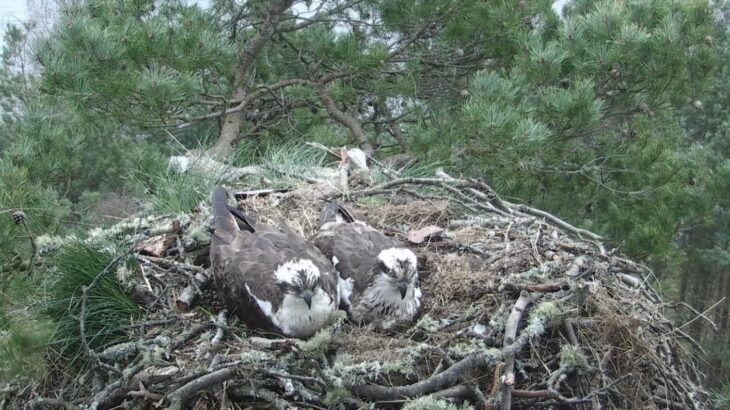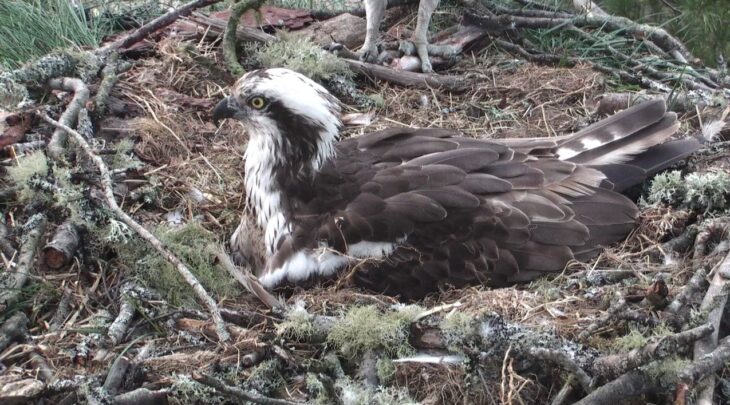Daily life on an osprey nest
Over the past few weeks our SPO Team and dedicated Osprey Watch volunteers have been keeping a close eye on our breeding osprey pair, LM12 and LF15. This allows us to keep track of various behaviours over the nesting season, including incubation, fish deliveries and defensive behaviour. Here is a brief summary of these behaviours throughout the season so far.
Incubation
LM12 and LF15 currently have three eggs and their most important task just now is to keep these safe and warm. The pair will switch around incubation duties throughout the day, ensuring the eggs are incubated consistently for healthy embryo development. From the data so far it turns out that LF15 incubates for 75% of the day while LM12 incubates makes up another 24%. The remaining 1% is due to exposure when the eggs are left unattended. As LF15 spends each night on the nest, this shows that during daylight hours our pair is fairly good at sharing incubation duties.

Intruders
Intruders are a daily occurrence for our breeding osprey pair, sometimes with 4 or 5 incidents in a single day. The most common intruders so far have been ospreys, crows and buzzards. Buzzards and crows will often be looking for food, potentially trying to steal fish from the ospreys or foraging on leftover scraps. Crows, however, could be a substantial threat as they will predate the eggs if they get the chance. Indeed, in 2014 a carrion crow managed to steal an egg from the Lowes nest while it was left unattended by LM12 and his previous mate.
Intruder ospreys could pose a risk if they are seeking to take over the nest. However, some ospreys may simply be passing over or fishing nearby. Whatever the intention, intrusion events can be stressful times for the breeding pair as they must defend their nest and keep their eggs safe. The resident pair will alarm call, mantle over the eggs to protect them or chase the intruders away (see our previous blog).

Fish Deliveries
Since the first egg was laid on the 4th of April, LM12 has delivered 30 fish to the nest. On average, there are 1.5 fish delivered per day with brown trout being the most common species. There have also been deliveries of grayling, salmon, rainbow trout, pike, perch and even an eel.
We have noticed an interesting trend in the numbers of fish delivered in the past few weeks. Around the time of egg laying (4th-11th April) the male was delivering 1-3 fish per day with an average of 1.9. Since then, there has been a slight decrease in the number of deliveries with 1 or 2 each day and an average of 1.3. This may be because LM12 has had less success in recent days – perhaps with poorer weather and fishing conditions – or it may be that LF15 needed more energy as she prepared to lay her eggs. Egg production requires substantial energy resources and it is possible that LM12 was providing additional food during laying time to ensure that his mate had enough energy to produce eggs.

These are our discoveries so far – we will continue to keep a close watch on the nest and share our findings over the season!
Jane and Nick
Species Protection Officers
Help protect Scotland’s wildlife
Our work to save Scotland’s wildlife is made possible thanks to the generosity of our members and supporters.
Join today from just £3 a month to help protect the species you love.
Preface
Over the past few weeks our SPO Team and dedicated Osprey Watch volunteers have been keeping a close eye on our breeding osprey pair, LM12 and LF15. This allows us …
